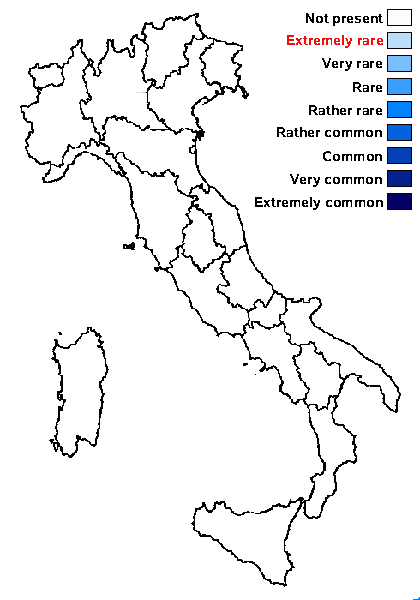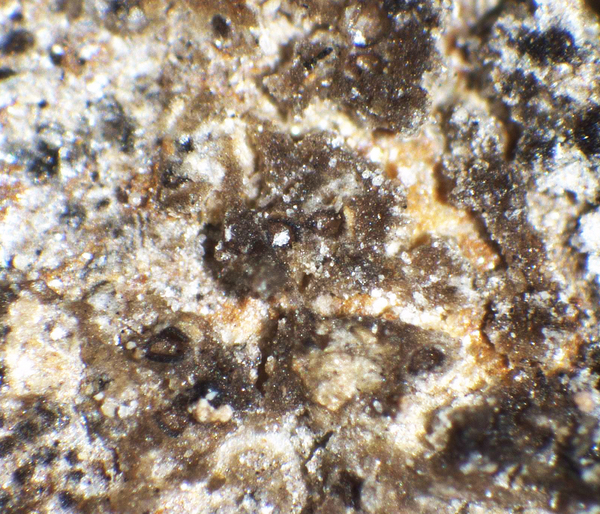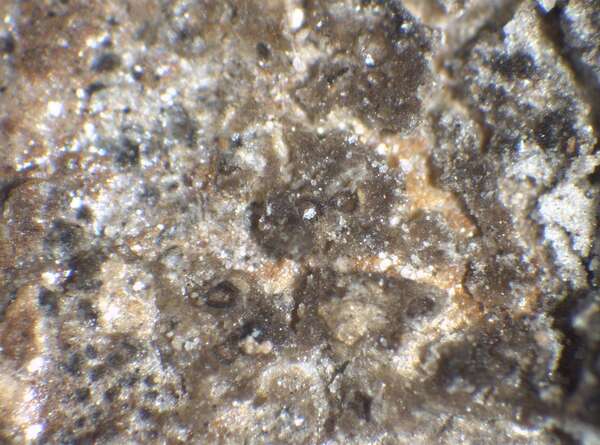Gyalideopsis modesta Vězda & Poelt
Herzogia, 2, 4: 472, 1973
Synonyms:
Distribution:
Description: Thallus crustose, episubstratic, rimose-areolate, with an uneven-verruculose surface, dark grey to blackish when dry, turning green when wet, poorly delimited, the areoles up to 0.5 mm wide, with slightly ascending margins. Apothecia half-immersed in the areoles, 0.2-0.5 mm across, with a concave to finally flat, brown disc and a thin, yellowish brown proper margin. Proper exciple 25-30 µm wide laterally, brown in outer part, colourless within; epithecium brown; hymenium colourless, 65-75 µm high; paraphyses branched and anastomosing, c. 0.8 µm thick; hypothecium colourless c. 10 µm high. Asci (4-)6(-8)-spored, cylindrical-clavate, thin-walled, apically thickened, the contents K/I+ reddish. Ascospores submuriform, with 3 transverse septa and (0-)1-3 longitudinal septa, constricted at septa, hyaline, ellipsoid to ovoid, 12-15 x 6-10 µm. Photobiont chlorococcoid. Spot tests: thallus K-, C-, KC-, P-, UV-. Chemistry: without lichen substances.
Note: on small siliceous pebbles in places with alternately moist and dry conditions; rare, only known from the Eastern Alps (Austria); to be looked for in the Italian Alps.
Growth form: Crustose
Substrata: rocks
Photobiont: green algae other than Trentepohlia
Reproductive strategy: mainly sexual
Pioneer species

Predictive model
Growth form: Crustose
Substrata: rocks
Photobiont: green algae other than Trentepohlia
Reproductive strategy: mainly sexual
Pioneer species

Predictive model
 Index Fungorum
Index Fungorum
 GBIF
GBIF




